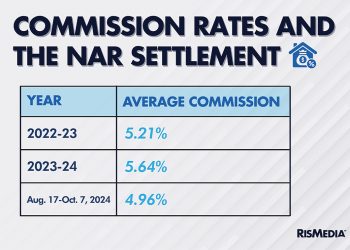Real estate isn’t a numbers game. It’s a relationships business. Though many have tried, no one has yet succeeded in turning the practice of buying and selling homes into an equation that can be worked out and solved on paper. But while your team’s business is almost certainly built on human connections and powered by skills and knowledge that can’t be quantified, that doesn’t mean you can’t use data to better understand your team members strengths, weaknesses, successes and goals.
While there is probably no need to “moneyball” your team’s whole approach to real estate, there are almost certainly a few measurable stats (apart from the obvious ones like GCI and closings) that can help your team members reach greater heights.
Here are four metrics to track in your team’s real estate business:
Appointment conversion rate
Very straightforward, this is simply the number of formal meetings your team members have with potential buyers or sellers, divided by the number who actually become clients through a listing or buyer representation agreement. This can tell you how good your team members are at closing, since most likely if someone is willing to sit down with you and hear a pitch, they are ready to buy or sell.
While coaches or perhaps even your broker might set a specific percentage as a goal, in the end, this metric is about each team member. If they are able to set up enough appointments that a 20% conversion rate nets them plenty of clients, there might be nothing to tweak in their pitch. Or, you might decide that focusing on that conversion rate is the most efficient way to boost your team’s income. Either way, knowing how well your team members do when the chips are down can help you make a more informed decision.
Warm/cold lead ratio
While many agents focus on the size of their database, maybe equally important is the balance of that database. There is nothing wrong with having a CRM full of people who aren’t planning to buy or sell for more than a year, or who haven’t engaged with your team members in a while. Real estate is a long game, and nurturing those relationships is still a worthwhile endeavor. But, if the overwhelming majority of your team’s contacts are cold, you might need to rethink some of their strategies. Perhaps they aren’t reaching the right demographics on social media, or maybe they need to find a more engaging drip campaign to learn more about the less engaged folks.
Response time
Though your team might have ways to automate your responses to inquiries or have an assistant or office manager who handles aspects of this, in the end, people want to hear directly from the agent who can help them buy or sell a home. This applies not just to potential clients, but also current ones. Positive online reviews very often mention how quickly agents respond during the buying and selling process, so if your team members are having trouble returning emails, voicemails, texts or other communication from clients, it could be costing them referrals. If you aren’t satisfied with your members’ response time, it is likely worthwhile to help them rethink their schedules, or even look at other investments that allow them to better keep in touch with those who need your team’s assistance.
Cost per lead
While this is easy to measure in some scenarios—for instance, if a team member ran a marketing campaign or ad for a specific period of time—it can be difficult to quantify in others. That doesn’t mean you shouldn’t try, though. If your team members run or attend lots of events, count how many contacts they create and how many leads come in, even if the payoff is not immediate. And don’t forget that cost isn’t just measured in dollars. If you can track your team members’ leads by time investment, that might give you incredible insight into where their business can grow. Four hours of cold calling might feel like a lot, but it might be generating your team members more leads than the four hours they spend writing blog content.
You don’t need a math degree to understand just how important numbers are to the real estate business. In the end, these metrics are just providing a different perspective on who your team is, how they operate and the investments they make. It will always be up to you to decide how—or if—you want to react to the insights the numbers provide. But as always, knowledge is power, and using these metrics is an important way to build the power of your team’s business.












